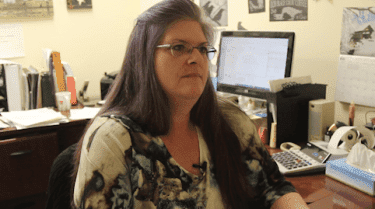Kent financial advisers provide student loan debt advice
February 9, 2020
Americans owed $1.5 trillion in student loan debt in March 2019, per the Pew Research Center. The institution said more people are attending college than ever before and the cost of education is increasing, causing the amount of the debt to be more than twice it was one just a decade ago.
“It’s a big deal,” said Beth Roe, a credit counselor with Consumer Credit Counseling Services in Kent. “It doesn’t go away.”
Roe said if someone is currently enrolled in school, the student should be aware of the amount of their loans. Graduates can refer to the National Student Loan Data System website for loan information and to understand the size of their loans and the servicers the government assigned to them.
“On that site, you can see what your federal loan types are, outstanding principles, interest balance, interest rates, loan disbursement dates, loan status and who the loan holder is,” Roe said.
It is best to take out student loans through the government instead of private loans because the interest rate will be lower, Roe said. The government provides subsidized and unsubsidized loans. Subsidized loans are more beneficial for students because the government pays the interest while the student is enrolled in school.
Roe said on average, federal loans will have between 3 and 6 percent interest. Private loans through a banking institution can have interest rates of 12 percent and above.
“That’s very high,” Roe said. “I would recommend if at all possible to avoid private lenders.”
When a student finishes attending college, they can head to StudentLoans.gov to see the interest rates on each loan. On this website, they can also use a repayment estimator to see what a standard payment would be versus an income-based payment.
“The standard payment is the full payment. That’s the best way to go because you’re going to be able to get it paid off within a normal period of time,” Roe said. “If you have to go on an income-based payment plan, you can do that for a lower payment.”
With an income-based payment plan, the interest continues to accumulate.
“So, if it’s a 30-year loan, you could still be paying it when you’re trying to retire at 67,” she said. “If you make the higher payments, you’re going to pay off more of the principle and knock out that interest, and the quicker you do that, the better off you are.”
Roe said paying off as little as an extra $30 each month added onto your repayment will make a difference.
Once a student graduates and starts the process of paying off loans, it’s important to consolidation, said Anissa Strickland, the acting financial director at Kent State.
“You’re borrowing these loans from the federal government, but then they assign the loans to a servicer,” Strickland said. “So more than likely, your loans will all be with one servicer, but there’s always the possibility they will not.”
By consolidating, graduates can get a lower overall interest rate and make repayment easier, she said.
After a college student is enrolled, they have a six-month deferment until they are required to start making loan payments.
“When you graduate, the federal government is going to reach out to you, so it’s very important that you pay attention to your e-mails,” Strickland said.
As overwhelming as student loans can be, she said there is one beneficial aspect about student loan repayments.
“It’s very easy to change your payment options. Maybe today, your income is not high,” Strickland said. “But two, three, four years down the road, the sooner you pay off your student loans; the better. There is no penalty for early repayment.”
To change repayment options, loan payers can go online or call their loan servicer.
Both Strickland and Roe stressed the importance of post-college students living below their means after leaving school and creating a budget plan.
“As wonderful as it would be to go buy a brand new car because you got your first job, or put yourself in a great apartment in a new city … The decisions you make now are going to be with you for a significant amount of time,” Strickland said.
She said not to panic because post-college students can always get help with their loan repayments. She advised students to seek out counselors for help after they leave their universities.
“At this point in your journey of getting through college, you’re graduating,” Strickland said.
“Looking back at how much you borrowed to go to school is water over the dam. You’ve made the decision that got you to this point, so now the important thing is making decisions that are going to get you out of debt as soon as possible.”
important thing is making decisions that are going to get you out of debt as soon as possible.”












